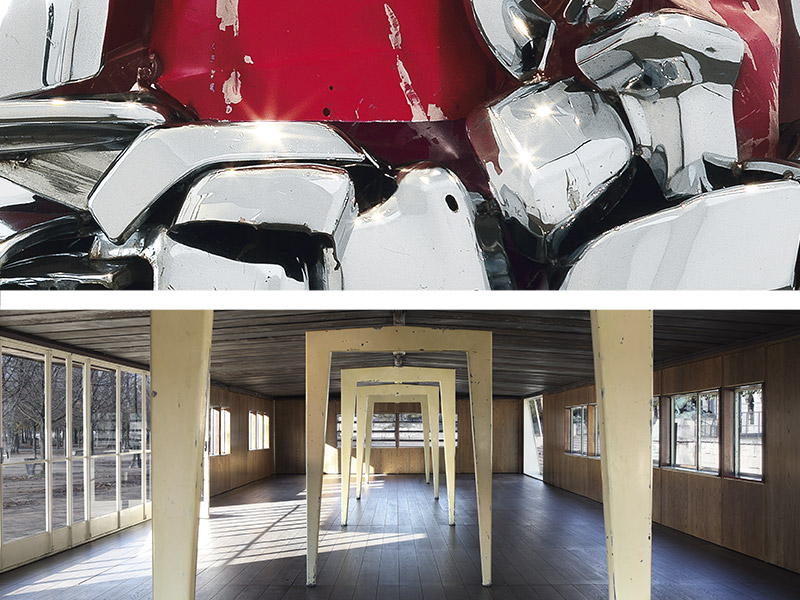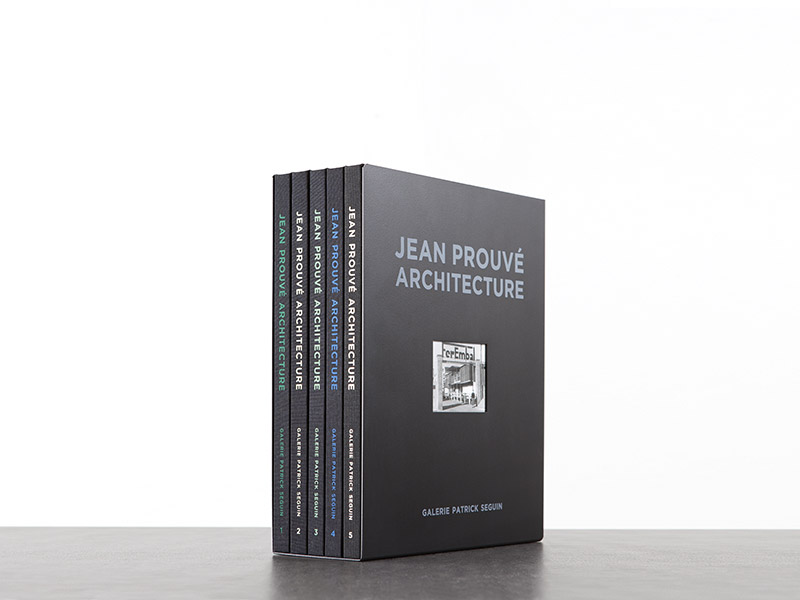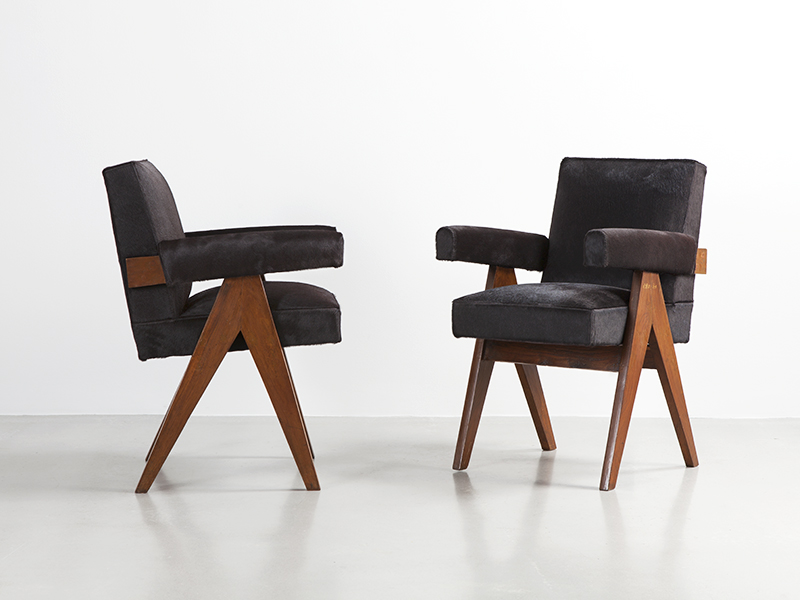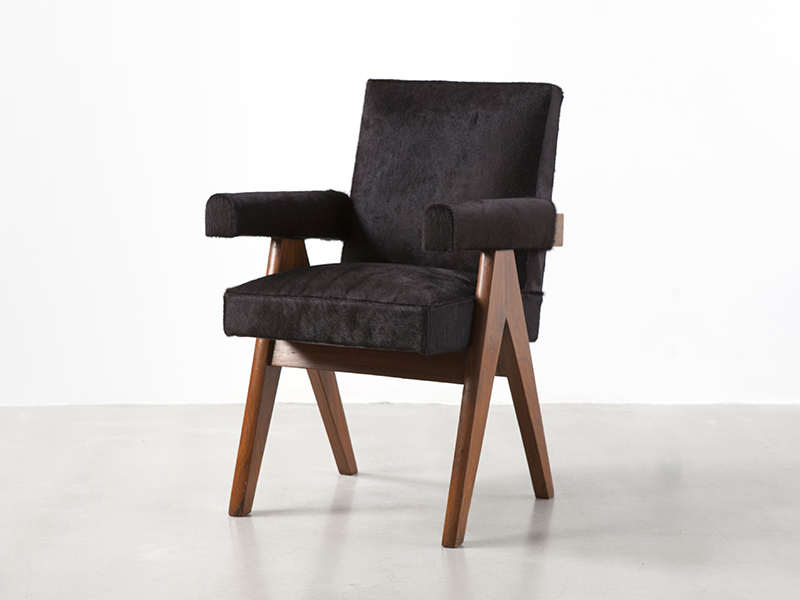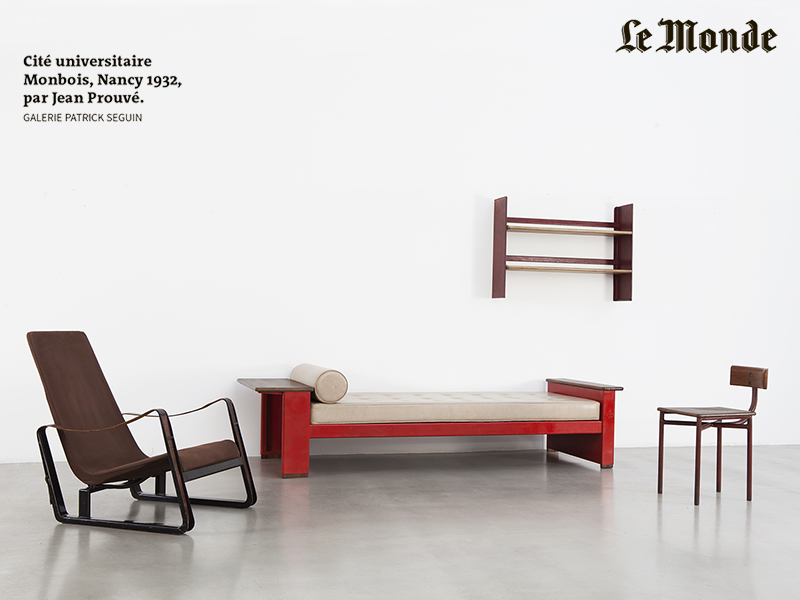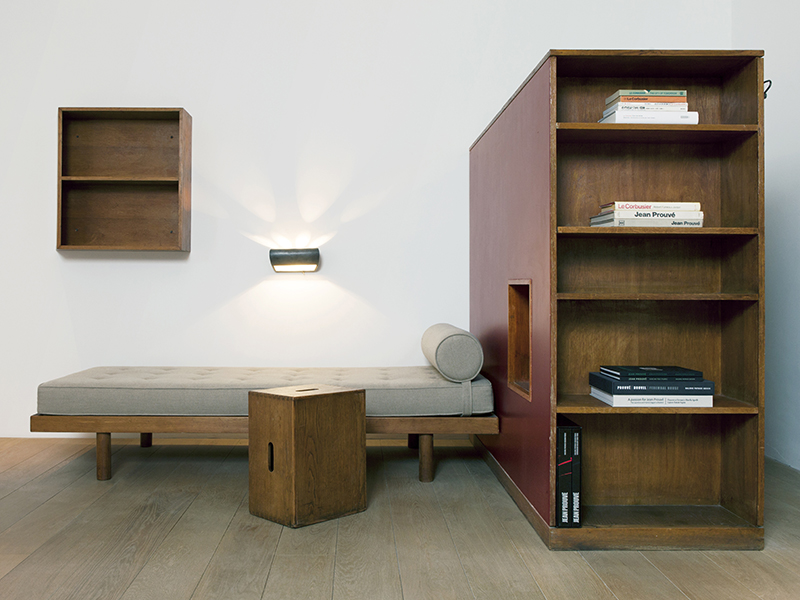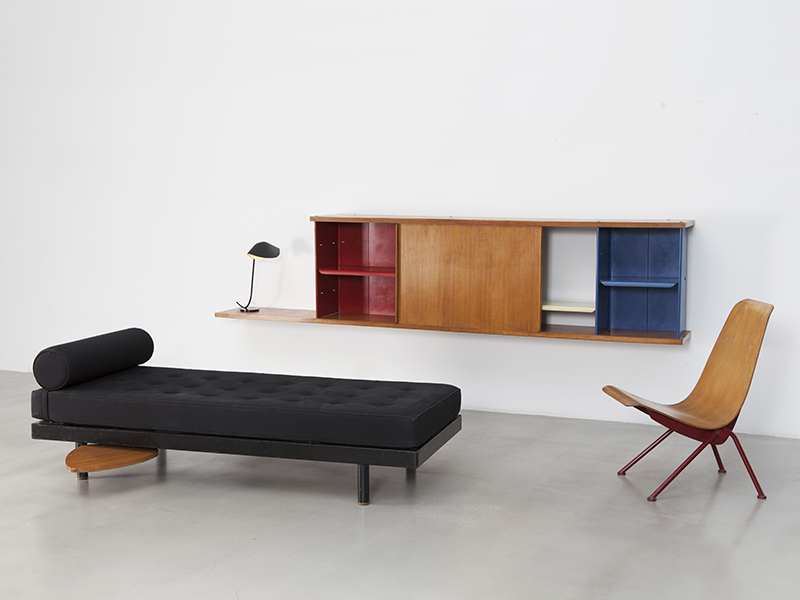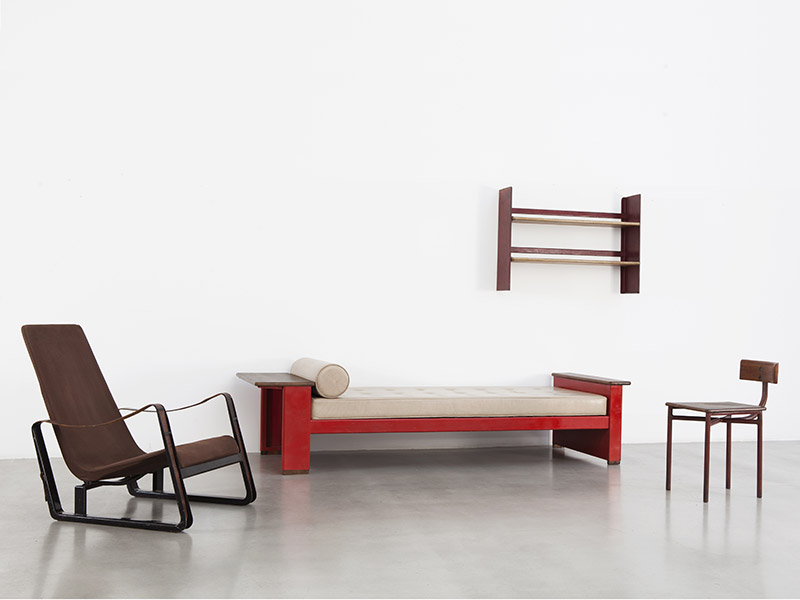From February 27th to April 4th, 2015, for their eighth collaboration, Gagosian Gallery and Galerie Patrick Seguin bring together the extraordinary sculptures of John Chamberlain and, for the first time in New York, 2 iconic demountable houses: Jean Prouvé’s Demountable Ferembal House, 1948, adapted by Jean Nouvel and Jean Prouvé’s School Complex of Villejuif, 1956.
EXHIBITION “CHAMBERLAIN-PROUVÉ” GAGOSIAN GALLERY & GALERIE PATRICK SEGUIN
Gagosian New York, in collaboration with Galerie Patrick Seguin, Paris, is pleased to present works by American artist John Chamberlain and French architect and designer Jean Prouvé, two twentieth century innovators who harnessed the strength and suppleness of metal to new potential in their respective fields. Large- and small-scale sculptures by Chamberlain will be in visual dialogue with two prefabricated houses and key architectural models by Prouvé. John Chamberlain began to create distinctive metal sculptures from industrial detritus during the late 1950s. While freely experimenting with a range of inexpensive materials—from paper bags to Plexiglas, foam rubber, and aluminum foil—again and again he returned to metal car components such as bumpers and hoods, which he dubbed “art supplies.” The assemblages preserve traces of his manipulation of machine-made elements: crumpling, bending, twisting, painting and welding steel to form deliberate gestures, he then fused these individual sections into thrilling multi-colored aggregations that range from miniature to monumental.
Jean Prouvé is widely acknowledged as one of the twentieth century’s most influential industrial designers. A self-taught engineer and passionate teacher, metalworker, architect and designer, he brought a strong social conscience to his pragmatic structural approach. Prouvé created furniture for the home, office, and classroom—as well as prefabricated houses, building components and façades—for more than sixty years. Consistent with his belief that “in their construction there is no difference between furniture and buildings,” he applied the same principles used in the making of furniture to his architecture of the postwar reconstruction. Streamlining research, development, and production, he was instrumental in ushering in building processes based on mechanized industry rather than artisanal craft. In combination with Chamberlain, the spare elegance of Prouvé’s architecture underscores the eruptions of form and color that Chamberlain’s sculptures achieved with like materials, a striking intersection of groundbreaking functionality and raw creative exuberance.
Jean Prouvé is widely acknowledged as one of the twentieth century’s most influential industrial designers. A self-taught engineer and passionate teacher, metalworker, architect and designer, he brought a strong social conscience to his pragmatic structural approach. Prouvé created furniture for the home, office, and classroom—as well as prefabricated houses, building components and façades—for more than sixty years. Consistent with his belief that “in their construction there is no difference between furniture and buildings,” he applied the same principles used in the making of furniture to his architecture of the postwar reconstruction. Streamlining research, development, and production, he was instrumental in ushering in building processes based on mechanized industry rather than artisanal craft. In combination with Chamberlain, the spare elegance of Prouvé’s architecture underscores the eruptions of form and color that Chamberlain’s sculptures achieved with like materials, a striking intersection of groundbreaking functionality and raw creative exuberance.
NEW PUBLICATION – JEAN PROUVÉ ARCHITECTURES
Since its opening in 1989 Galerie Patrick Seguin has been building a collection of Jean Prouvé demountable houses that is today the largest in the world. With 19 of these structures ranging from 172 to 2054 sq. ft., the gallery has worked strenuously to promote Jean Prouvé’s architecture through numerous exhibitions and fairs throughout the world, including at the MoMa in New York, DesignMiamiBasel/, the Venice Biennale, and the Pinacoteca Govanni e Marella Agnelli in Turin.
Accompanying its exhibitions, Galerie Patrick Seguin has also developed an editorial line of comprehensive publications and is currently releasing a set of 5 monographs dedicated to Jean Prouvé’s demountable architecture, illustrated with archival and contemporary photographs.
These 5 volumes are the first of 15 that will be released in 3 separate boxed sets over the course of 2015 and 2016.
Accompanying its exhibitions, Galerie Patrick Seguin has also developed an editorial line of comprehensive publications and is currently releasing a set of 5 monographs dedicated to Jean Prouvé’s demountable architecture, illustrated with archival and contemporary photographs.
These 5 volumes are the first of 15 that will be released in 3 separate boxed sets over the course of 2015 and 2016.
WALLPAPER* – DESIGN MIAMI/ 2014 PREVIEW
Marking the gallery’s tenth participation at the fair, Galerie Patrick Seguin presents works by Jean Prouvé, Le Corbusier and Charlotte Perriand created for the dormitories of French universities. Two dormitory rooms by Prouvè (for the Cité Universitaires in Nancy and Anthony near Paris) and one by Le Corbusier and Perriand (the House of Brazil at the Cité Internationale Universitaire) are displayed for the first time in this retrospective of the three iconic designers’ no-fuss approach to economical, solid design.
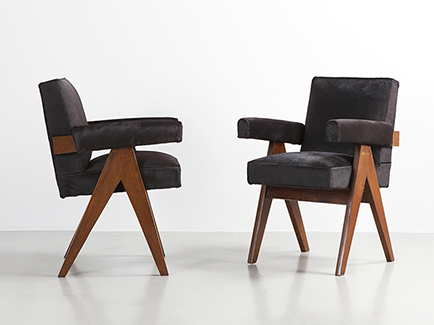
“Senat” chair, ca. 1959-60
M LE MAGAZINE DU MONDE – NOVEMBER 25, 2014
HIGHLIGHT DESIGN MIAMI/ – LE CORBUSIER & CHARLOTTE PERRIAND, C.I.U.P., 1956
Established in 1925, the ‘Cité Internationale Universitaire de Paris’ aimed to foster cultural diversity and to address the lack of accommodation for undergraduates in the capital. Thirty-seven housing facilities for as many nations – or « Houses » – were thus built between 1929-1969 to accommodate students from the entire world. Architect Lucio Costa, entrusted as of 1952 with the building of the Brazil House within the ‘Cité Universitaire Internationale’, called upon Le Corbusier to work with him on a joint project including a 100-room residence, a theatre, a library and a meeting room. Le Corbusier, with the participation of Charlotte Perriand, also carried into effect the furnishing of individual rooms in the student residence. The resulting furniture was multifunctional and characterized by its stern, clear lines, softened by splashes of color. Created in a context of stringent budget restrictions, this individual student room was the culmination of a process of reflection undertaken since the 1920s by Le Corbusier around the concept of “cell” and on the study of rationalization and the economy of living spaces. The Brazil House at the ‘Cité Internationale Universitaire de Paris’ was inaugurated on June 24, 1959.
HIGHLIGHT DESIGN MIAMI/ – JEAN PROUVÉ – UNIVERSITY DORMITORY ROOM, ANTONY 1954
The emerging university market was to Ateliers Jean Prouvé an opportunity to work on new furniture models, both light and inexpensive, for fitting out the university accommodation complex.
Built by architect Eugène Beaudouin in 1954, the ‘Cité Universitaire Jean Zay’ was perceived as a model: in the manner of a whole town it included, as well as lodgings, three swimming pools, two restaurants, three lecture halls, a theatre, a library, a nursery school, two day nurseries, an infirmary, a social care center, and all kinds of shops.
A second competition for room furnishing was launched in the beginning of the year 1955. Several designers were invited to take part in the furnishing of the accommodation complex, among whom Jean Prouvé, who won the order for the furniture of the halls, the restaurants as well as for 148 individual rooms.
The ‘Cité Universitaire Jean Zay’ was inaugurated on December 1, 1955.
Built by architect Eugène Beaudouin in 1954, the ‘Cité Universitaire Jean Zay’ was perceived as a model: in the manner of a whole town it included, as well as lodgings, three swimming pools, two restaurants, three lecture halls, a theatre, a library, a nursery school, two day nurseries, an infirmary, a social care center, and all kinds of shops.
A second competition for room furnishing was launched in the beginning of the year 1955. Several designers were invited to take part in the furnishing of the accommodation complex, among whom Jean Prouvé, who won the order for the furniture of the halls, the restaurants as well as for 148 individual rooms.
The ‘Cité Universitaire Jean Zay’ was inaugurated on December 1, 1955.
HIGHLIGHT DESIGN MIAMI/ – JEAN PROUVÉ – UNIVERSITY DORMITORY ROOM, NANCY 1932
In Nancy, in 1930, following a serious housing crisis, some university students were forced to exit their education. This gave birth to the idea of building an accommodation complex, so as to ensure undergraduates enough comfort and healthy conditions during their studies.
During the building process for ‘Cité Universitaire Monbois’, as designed by Jean Bourgon, the architect, Jean Prouvé successfully took part in the interior design competition. He was entrusted with the furniture for 70 individual rooms.
Each room included a BED, with or without headboard, a DESK and chair, an armchair and a SHELF, the whole being designed so as to be inexpensive, solid and at the same time easy to clean. These specifications in the 1930 invitation to tender, explain the almost exclusive use of metal plates and tubular steel, enameled in various shades of red.
The whole set of furniture was the first to be mass-produced for a public procurement contract. This first experiment characterized a new orientation for Ateliers Jean Prouvé – which was subsequently confirmed.
The ‘Cité Universitaire Monbois’ was inaugurated on November 6, 1932.
During the building process for ‘Cité Universitaire Monbois’, as designed by Jean Bourgon, the architect, Jean Prouvé successfully took part in the interior design competition. He was entrusted with the furniture for 70 individual rooms.
Each room included a BED, with or without headboard, a DESK and chair, an armchair and a SHELF, the whole being designed so as to be inexpensive, solid and at the same time easy to clean. These specifications in the 1930 invitation to tender, explain the almost exclusive use of metal plates and tubular steel, enameled in various shades of red.
The whole set of furniture was the first to be mass-produced for a public procurement contract. This first experiment characterized a new orientation for Ateliers Jean Prouvé – which was subsequently confirmed.
The ‘Cité Universitaire Monbois’ was inaugurated on November 6, 1932.

